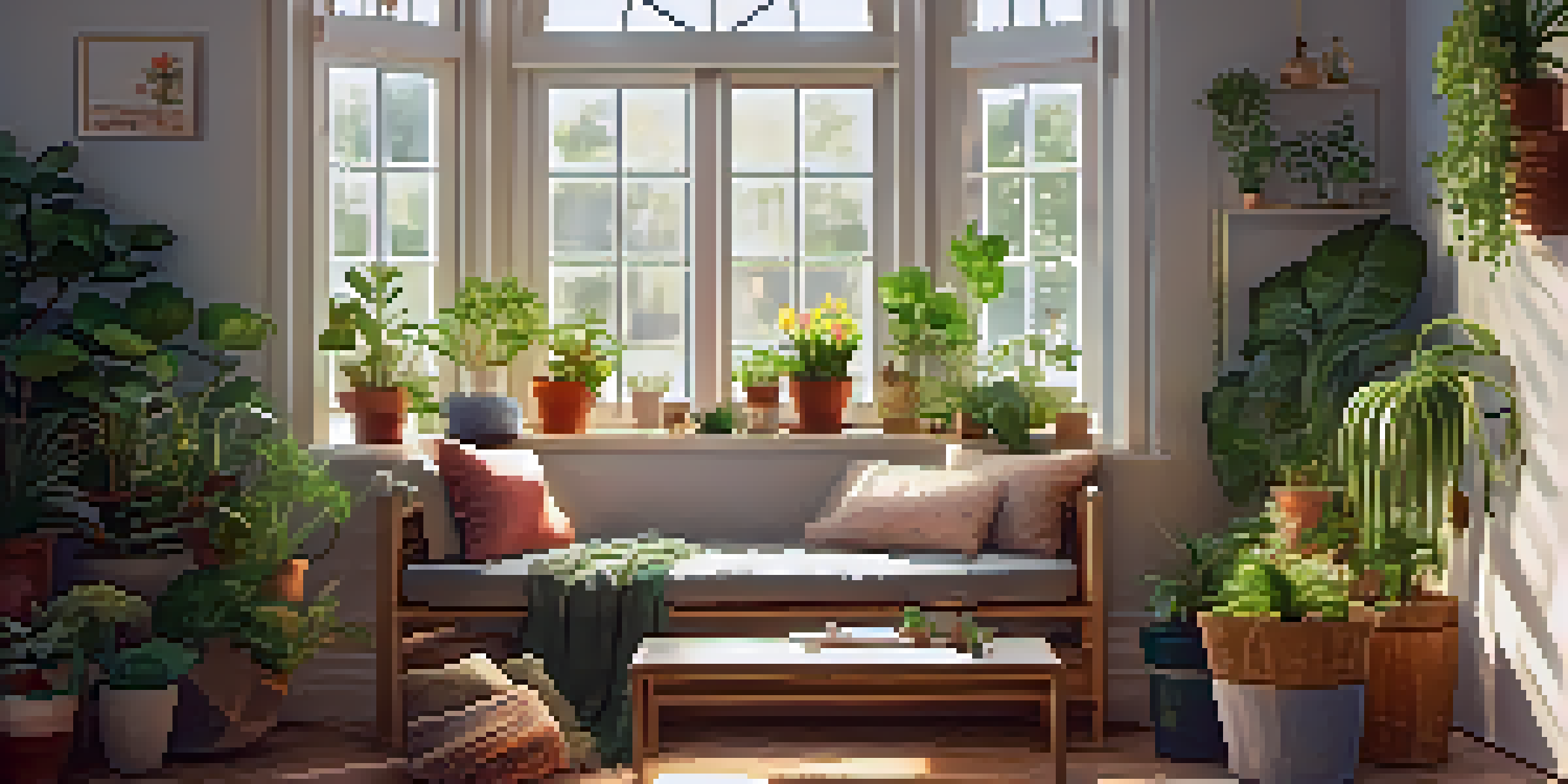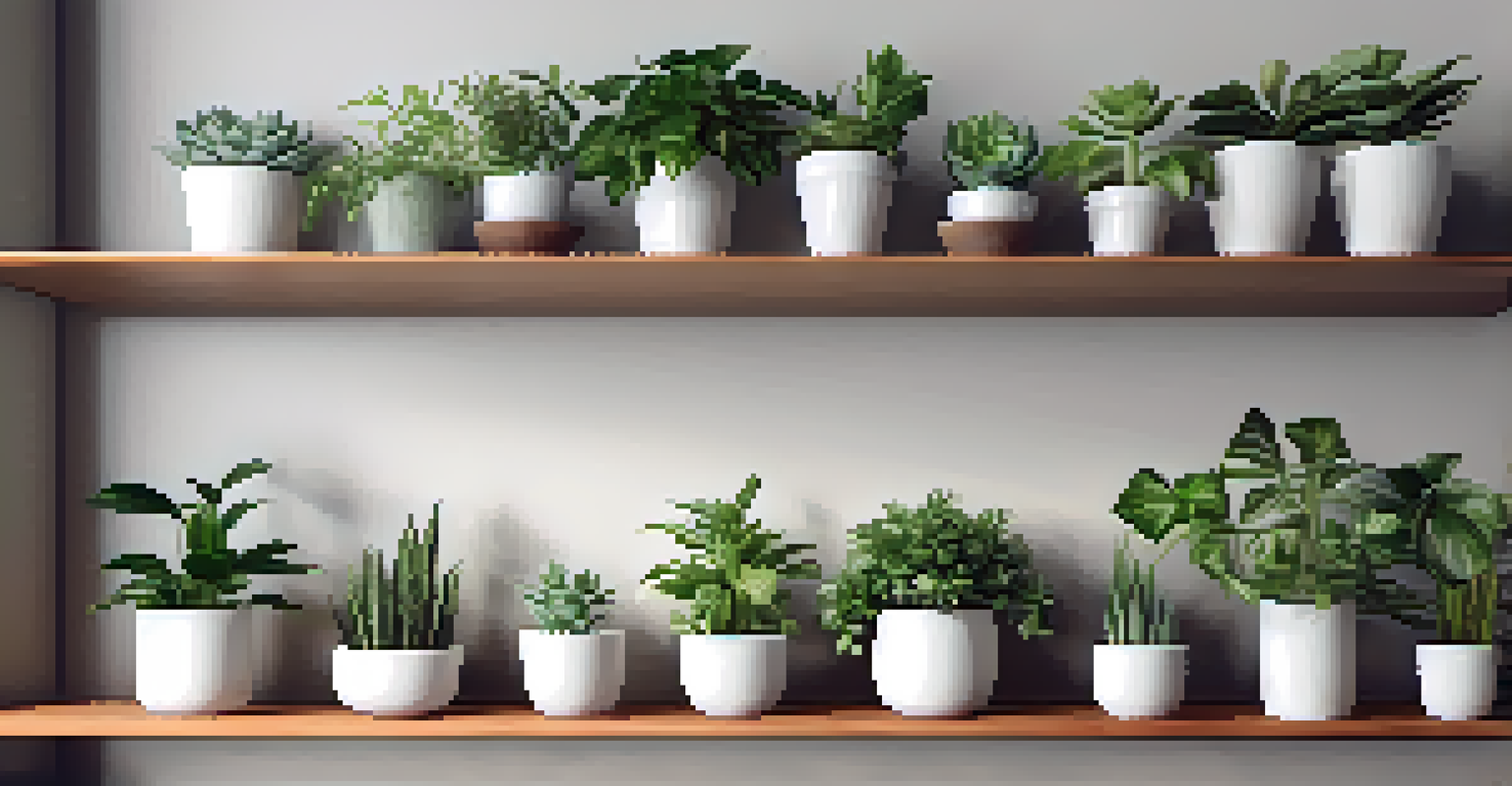Creating a Beautiful Indoor Garden in Small Spaces

Understanding the Benefits of Indoor Gardening
Indoor gardening offers a multitude of benefits, from improving air quality to reducing stress. Plants naturally filter toxins from the air, making your living space healthier. Additionally, caring for plants can provide a sense of purpose and joy, turning your home into a serene retreat.
Gardening adds years to your life and life to your years.
In small spaces, indoor gardens can act as a focal point, adding beauty and life to otherwise dull corners. A few strategically placed pots can create a mini oasis that uplifts your mood and enhances the atmosphere of your home. Plus, many plants require minimal maintenance, making them perfect for busy lifestyles.
Whether you’re a seasoned gardener or a complete novice, indoor gardening is accessible to everyone. With the right plants and a little creativity, you can cultivate a lush environment that suits your personal style and needs.
Choosing the Right Plants for Small Spaces
When selecting plants for your indoor garden, consider varieties that thrive in limited space. Succulents, for instance, are compact and require little water, making them perfect for small apartments. Herbs like basil or mint are also great choices, as they can be used in cooking while adding greenery to your kitchen.

Another option is to look for trailing plants, such as pothos or string of hearts, which can beautifully cascade from shelves or hanging pots. These plants take up vertical space rather than horizontal, allowing you to maximize your limited area. Additionally, they’re often quite forgiving, making them ideal for beginners.
Benefits of Indoor Gardening
Indoor gardening improves air quality and reduces stress while providing a sense of purpose and joy.
Remember to consider light conditions when choosing your plants. Some plants thrive in bright, direct light, while others prefer low-light environments. Assess the lighting in your space to ensure your plants will flourish.
Utilizing Vertical Space for Your Indoor Garden
In small spaces, vertical gardening is a game-changer. By utilizing walls, shelves, and vertical planters, you can create a thriving garden without sacrificing floor space. Consider installing shelves or wall-mounted pots to display your plants in a visually appealing way.
The love of gardening is a seed once sown that never dies.
You can also explore DIY solutions, like creating a vertical garden from pallets or repurposing old wooden crates. These creative options not only save space but also add a rustic charm to your decor. Plus, they provide a fun weekend project that can bring your vision to life.
Hanging plants is another effective method. Use macramé hangers or simple hooks to suspend plants from the ceiling, instantly adding interest to your space. This allows you to enjoy greenery at eye level while keeping surfaces clear.
Creating a Cozy Indoor Garden Nook
Designating a specific nook for your indoor garden can enhance its charm and functionality. Choose a spot with ample natural light, like a sunny corner near a window, to create a cozy retreat. Add comfortable seating, such as a small chair or cushion, for enjoying your green space.
Incorporate elements like a small table for your gardening tools or a few books about plants. This not only maximizes the use of your nook but also makes it a relaxing area to unwind. Consider adding decorative items like candles or fairy lights to enhance the ambiance.
Choosing Space-Savvy Plants
Selecting compact and low-maintenance plants, like succulents and herbs, is essential for maximizing limited indoor spaces.
Remember, the goal is to make it a personal oasis. Personal touches, such as photos or artwork, can make your garden nook truly feel like your own little sanctuary.
Best Practices for Indoor Plant Care
Caring for indoor plants is crucial to maintaining a thriving indoor garden. Water your plants according to their specific needs—some prefer to dry out between waterings, while others thrive in consistently moist soil. Always check the moisture level before watering to avoid overwatering, which can lead to root rot.
Regularly dusting your plants' leaves helps them absorb sunlight more effectively. A damp cloth can easily remove dust and keep your plants looking healthy and vibrant. Additionally, don’t forget to rotate your plants occasionally to ensure even growth as they reach for the light.
Fertilizing your plants during the growing season can also provide them with essential nutrients. Choose a balanced indoor plant fertilizer, and follow the instructions to avoid over-fertilizing, which can harm your plants. By observing their growth patterns, you can adjust care as needed.
Incorporating Decorative Planters and Pots
The right planters and pots can elevate your indoor garden’s aesthetic. Choose designs that complement your decor style, whether it’s modern, bohemian, or rustic. Unique pots can serve as statement pieces while also providing a home for your plants.
Consider mixing different materials, such as ceramic, terracotta, or metal, to create visual interest. You could even paint plain pots to match your color scheme or add personal flair. Remember, the pot’s size should also be appropriate for the plant’s growth; a pot that’s too small can hinder root development.
Creating a Cozy Garden Nook
Designating a specific area for your indoor garden can enhance its charm and make it a relaxing retreat.
Don’t overlook the potential of hanging planters as well. They can create a unique visual effect and draw the eye upwards, making the space feel larger. Use colorful or patterned hangers to enhance the overall look of your indoor garden.
Maintaining a Healthy Indoor Garden Environment
Creating a healthy environment for your indoor garden goes beyond plant care; it involves maintaining the right conditions. Ensuring adequate humidity is key, especially in dry climates or during winter months. You can increase humidity by misting your plants or placing a small humidifier nearby.
Temperature is another factor to consider. Most houseplants thrive in temperatures between 65°F to 75°F. Avoid placing plants near drafts, heaters, or air conditioning vents, as temperature fluctuations can stress them out. Keeping a consistent environment is crucial for their well-being.

Lastly, be vigilant about pests. Regularly checking your plants for signs of infestation can help you catch problems early. If you notice pests, treat them promptly with natural solutions or insecticidal soap to keep your indoor garden thriving.